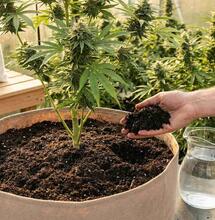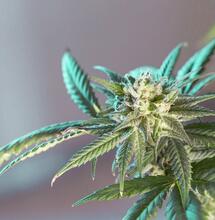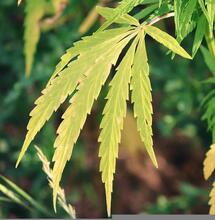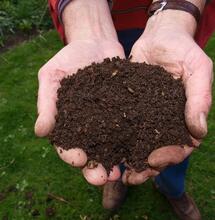Can Cannabis Plants Survive Without Silica?
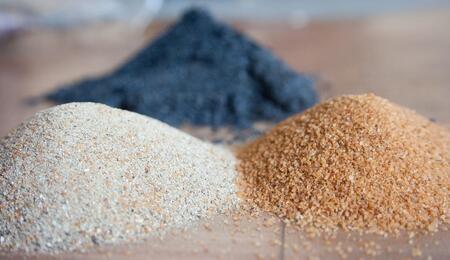
Cannabis plants do not necessarily need silica to survive; in most cases, they can grow perfectly fine without it. But there are numerous benefits when you add this supplement during growing. Keep reading and learn everything you need to know about silica and how it can help with growing better and stronger cannabis plants.
There are many types of additives on the market, and being aware of what they do is the first step in knowing how to make the best use of them. Silica, which is one of the most common elements in nature, is one such additive.
Second only to oxygen on our planet, this element is present in 95% of all rocks, and it’s essential in forming stuff like beach sand as well as pretty crystals like quartz. It’s so abundant that an entire valley in California has been named after it.
Silica molecules are also found in the human body. It’s found in collagen, which is used to build bone, cartilage, tendon and other tissue. If it’s good for us humans, and for creating perfect sandy beaches, then this compound must be also good for growing cannabis, correct?
Here’s the full list of benefits from using silica in cannabis growing:
- Enhances strength of cell walls
- Protects plants from soil contamination
- Makes plants more adaptive to changing environment
- Improves nutrient absorption
- Boosts the metabolism of cannabis plants
- Defends plants against disease
Let’s find out more about what happens when using silica in cannabis cultivation.
How Silica Strengthens Cannabis Plants?
Silica is a popular additive in cannabis growing and there are various brands from which to choose. Although not usually considered a required nutrient, if available to the plant, silica can improve health.
Plants take up silica in the form of silicic acid or silicates, with ‘monocots’ or plants with a single seed leaf (cotyledon) usually absorbing to a higher percentage than ‘dicots’ or double cotyledon plants, such as Cannabis.
Silica is primarily stored in the plant in the spaces between the cellulose micelles, which reinforces the epidermal cell walls, thereby strengthening them. In much the same way that steel rebar strengthens cement walls in buildings, silica adds strength to plant cells.
Having improved cell wall strength is beneficial in a variety of circumstances. This helps to provide structure to cells, reducing the tendency to wilt - especially in dry conditions. Since the plant is less apt to wilt, the leaves stay turgid and open, increasing the opportunity for photosynthesis and thereby improving growth. When conditions are cold and wet, the additional strength helps to fend off invasive fungal attacks by making the epidermal layer more difficult to penetrate. For the same reason, the additional toughness of the plant’s skin also helps to make the plant less attractive to insect attacks. Silica also improves plant tolerance to manganese, aluminum and salt stress.
How Silica Protects Plants from Contamination in Soil?
Contaminated soil means that the soil has been depleted from valuable nutrients, in addition to the presence of heavy metals in it, which could deploy from nearby factories or polluted waterways. This is one particular challenge most often experienced by outdoor growers.
Plants absorb toxins even when they are exposed to small concentrations of it, usually heavy metals like lead, aluminum, or chromium, to name just three. Pollutants affect plants in various negative ways, such as slowing down metabolic processes, causing nutrient lockout, and making the plant ill.
Inoculating your plants with silica helps in these instances. It will take the edge off and make the pollutant less bioavailable for the roots and the rest of the plant. Nevertheless, it’s much better to check the substrate/soil for pollutants before planting any seeds, and thus completely avoid growing cannabis in contaminated soil in the first place.
How Silica Improves the Overall Health of Cannabis Plants?
Once silica works to enhance plant cell strengths and improve the substrate where the plant grows, it keeps on giving to cannabis. Added in depleted soil, silica can partially compensate for the lack of other foods and minerals that are unavailable for the roots to suck on.
In fine soils, silica plays a major role in how the plant absorbs macronutrients such as Nitrogen and Potassium, as well as micronutrients like Magnesium. When the uptake of these nutrients is balanced, the plant optimizes chlorophyll production. When there’s sufficient chlorophyll production, it means that the plant is creating enough energy and enough sugars, which ultimately speeds up the metabolism and the plant becomes more efficient in how it spends energy. It develops into a bigger plant that could potentially bring bigger buds and abundant harvest.
Finally, plants exposed to silica concentrate certain levels of it around vulnerable places, including the leaves which are often a favorite to uninvited creepy-crawlies. With silica, as already mentioned, cannabis plant build a more solid barrier, a more solid skin all over. With coarsen barrier and well-formed plant tissue, thanks to silica, it’s much more difficult for various bugs to bite, sip and sup on leaves or the rest of the plant.
So, to conclude, cannabis plants can survive without silica, but there are many instances where silica could literally save the day from headaches and problems.
Also read on Soft Secrets:
